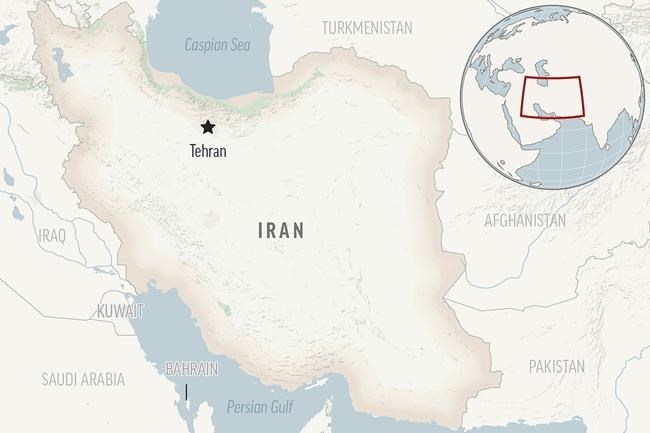TEHRAN, Iran (AP) — Iran has begun producing enriched uranium at 60% purity at the country's underground Fordo nuclear plant, official media reported Tuesday, describing it as a response to a resolution by the United Nations' nuclear watchdog.
The increased enrichment, reported by the official news agency IRNA, was seen as a significant addition to the country's nuclear program.
Enrichment to 60% purity is one short, technical step away from weapons-grade levels of 90%. Nonproliferation experts have warned in recent months that Iran now has enough 60%-enriched uranium to reprocess into fuel for at least one nuclear bomb.
The International Atomic Energy Agency has reported that Iran is enriching uranium to 60% purity. Iran is already enriching to 60% purity at its Natanz nuclear facility in central Iran. Fordo is some 100 kilometers (62 miles) south of the capital of Tehran.
IRNA did not give details on the amount of the enriched uranium being produced.
On Monday, Iran’s Foreign Ministry spokesman, Nasser Kanaani, said his country took the steps in reaction to what he said was a resolution by the IAEA, the UN nuclear watchdog. Officials did not elaborate.
Earlier this month, the IAEA said it believes that Iran has further increased its stockpile of highly enriched uranium. As recently as last week, the agency criticized Tehran for continuing to bar the agency’s officials from accessing or monitoring Iranian nuclear sites.
A separate report said IAEA Director General Rafael Grossi is “seriously concerned” that Iran has still not engaged on the agency’s probe into man-made uranium particles found at three undeclared sites in the country. The issue has become a key sticking point in the talks for a renewed nuclear deal.
It has been nearly two years since IAEA officials have had full access to monitor Iran’s nuclear sites, and five months since the surveillance equipment was removed.
The IAEA’s assessment came as efforts to revive Iran’s 2015 nuclear deal with world powers, which eased sanctions on Iran in return for curbs on its nuclear program, have stalled.
The United States unilaterally pulled out of the nuclear deal — formally known as the Joint Comprehensive Plan of Action, or JCPOA — in 2018, under then-President Donald Trump. It reimposed sanctions on Iran, prompting Tehran to start backing away from the deal’s terms.
The semi-underground enrichment facility in Natanz is home to thousands of centrifuge machines.
Iran began 60% enrichment in Natanz in 2019.
Natanz was target of sabotage in 2021 , an explosion that hit new halls for installing centrifuge machines as Iran called that a “nuclear terrorism” and a shadow war between Tehran and Israel, the prime suspect in the sabotage, raged.
The Associated Press



